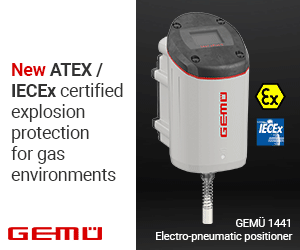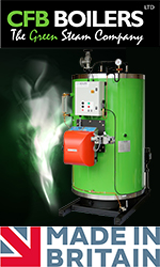Calibration ensures correct process equipment monitoring and measurement
From torque wrenches to high temperatures ovens, calibration certifies the safe and economical operation of equipment asserts Barry Atkins, managing director of independent test expert PASS Ltd.
All instruments and measurement tools drift over time and will need calibration. When a high pressure gas station is manufactured for example, most of the pipe connections to valves and meters are flanged. Various nuts and bolts are used for the flange connections, which must be tightened by using torque wrenches.
The torque that must be applied to each nut is specified by the manufacturer. If the torque is lower than the nominated value, leakages or even disconnections may occur. If it is of a higher value, shear damage to the thread on fasteners of critical equipment may occur, leading to industrial accidents and injuries. The only sure way that proper torque is applied is to have the torque wrench calibrated.
The pipes used in a high pressure gas station may be coated to avoid corrosion. A coating thickness tester measures the thickness of the painting while a ‘holiday detector’ generates a voltage to detect film discontinuities, both of which need to be properly calibrated.
High temperature ovens
In the aluminium industry, aluminium must be heated up to a certain temperature in order to melt and produce aluminium profiles. This is performed in high temperature ovens which are programmed at a particular temperature setting and have an indicator that shows temperature, which needs periodic calibration.
There is a close relationship between mathematics and measurements. The quantities measured have two parts – the name of the unit and their numerical value. Ohm’s Law shows how voltage, current and resistance in an electrical circuit are related to each other by the voltage triangle. If the values of any two units are known, the value of the third can be calculated, for example voltage, which is given by the equation V = I x R.
Null detectors measure voltage differences. When the difference is zero Volts, the meter’s reading is at null. A typical application of a null detector is the measurement of the difference in the output of two resistive voltage dividers whose inputs are in parallel across a voltage source.
There are digital and analogue null detectors. Typical analogue null detectors are actually galvanometers and contain a pointer resting at the middle of a deflection scale when there is zero input voltage. The pointer can move in both directions, indicating the polarity of the difference as well. Digital Null detectors are much more sensitive due to their ability to amplify a voltage difference. They can measure accurately a null between voltage amplitudes from under 1μV to 1kV.
Standards and traceability are closely related to each other. For a defined standard to be universally accepted, everybody must agree to trace their measurements back to it. For a calibration laboratory to feel secure that its measurement of a quantity is compatible with that of another calibration laboratory, it must accept the defined standard and establish traceability to it.
Traceability refers to the procedures and records that are used and maintained to demonstrate that calibrations made by a local calibration laboratory accurately represent the quantities of interest.
In order for a calibration laboratory to be confident for the quality of its own standards, it is good practice to participate often in inter-laboratory comparisons. To support the claim of traceability, the calibration laboratory must have documented measurement procedures and provide a description of the chain of comparisons that were used to establish a connection to a particular stated reference. 
Traceability of measurements
The traceability of measurements needs not only to be valid but also to be presented to the customer. Calibration reports, besides presenting the calibration results, also provide evidence about the traceability of the measurements.
Calibration reports must always contain a statement in order to prove the unbreakable chain of comparisons to national standards. For ISO 17025 accredited laboratories the traceability statement is a requirement. But even when the calibration is performed by a non-accredited laboratory, the customer must always demand that the traceability of measurements to be proven.
UKAS (United Kingdom Accreditation Service) is recognised by the British government to assess the competence of organisations that provide certification, testing, and inspection and calibration services against internationally agreed standards.
For a calibration laboratory to attain UKAS accreditation according to ISO 17025, it must fill out an application form with all necessary information to define the scope of its accreditation. The scope must contain the following information like type of calibration, range of measurements, best measurement capability and authorized signatories.
The final accreditation scope of the laboratory will be agreed and finalised after the completion of UKAS assessment.
When UKAS receives the application, a member of UKAS staff is assigned as Assessment Manager for the specific project. This person must normally have knowledge of the field of calibrations concerned. Usually the Assessment Manager acts also as the Lead Assessor and selects the appropriate assessment team, consisting of as many Technical Assessors as necessary to provide technical expertise to assess the laboratory’s competence. 
For further information, please visit PASS Ltd’s dedicated calibration website.
Telephone: 0845 365 4050
Email: pr@pass.co.uk



























































































































